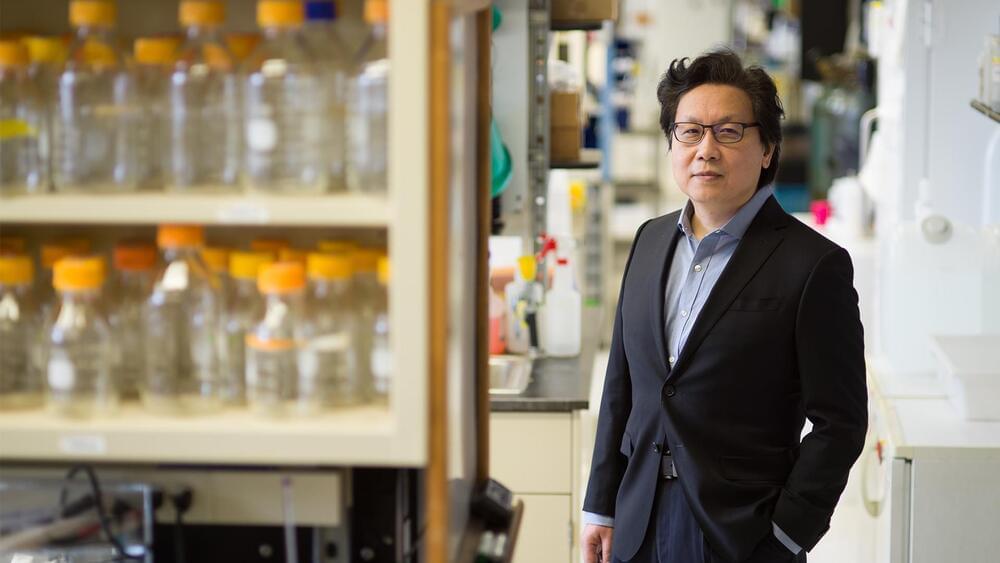Einstein scientist Xingxing Zang, Ph.D., has teamed up with Einstein grad, Elizabeth Stoner, M.D.
Albert Einstein College of Medicine researcher Xingxing Zang, Ph.D., latest cancer research and clinical trial.


Topological Deep Learning (TDL) is gaining traction for its ability to capture higher-order interactions beyond the pairwise structure of #graphs, using tools from #algebraic #topology, especially combinatorial topological spaces.
How combinatorial topological spaces can be used to promote a paradigm shift from inferring pairwise to multiway latent relationships in data.
Several problems in machine learning call for methods able to infer and exploit multi-way, higher-order relationships hidden in the data. We propose the new beyond-graph paradigm of Latent Topology Inference, which aims to learn latent higher-order combinatorial topological spaces describing multi-way interactions among data points. To make Latent Topology Inference implementable, we introduce the Differentiable Cell Complex Module, a novel learnable function able to infer a latent cell complex to improve the downstream task.
This post is based on the paper by Claudio Battiloro, Indro Spinelli, et al., “From Latent graph to Latent Topology Inference: Differentiable Cell Complex Module”, ICLR 2024, a collaboration with Lev Telyatnikov, Michael Bronstein, Simone Scardapane, and Paolo Di Lorenzo. The code can be found here.
Graph Neural Networks (GNNs) have become prominent in several domains, due to their ability to merge neural networks flexibility with the knowledge of data relationships modeled through graphs. However, GNNs typically need as input a fixed graph (which is assumed optimal for the task at hand), and they can explicitly model only pairwise interactions.

In an extremely cosmic–brain take, University of Rochester astrophysics professor Adam Frank suggests that a civilization could advance so much that it could eventually tinker with the fundamental laws of physics.
It’s a mind-bending proposition that ventures far beyond the conventional framework of scientific understanding, a reminder that perhaps we should dare to think outside the box — especially as we continue our search for extraterrestrial civilizations.
If a civilization were to be able to change the laws of physics, “the very nature of energy itself, with established rules like energy conservation, would be subject to revision within the scope of engineering,” Frank, who is part of the NASA-sponsored Categorizing Atmospheric Technosignatures program, wrote in an essay for Big Think.


Archaeologists have dug up mysteriously black and fertile patches of ancient soils in hundreds of sites across the Amazon. 🌎 https://www.freethink.com/science/carbon-dark-earth-ancient-technique
The team’s study appears in Science Advances. Other authors include former MIT postdoc and lead author Morgan Schmidt, anthropologist Michael Heckenberger of the University of Florida, and collaborators from multiple institutions across Brazil.
In their current study, the team synthesized observations and data that Schmidt, Heckenberger, and others had previously gathered, while working with Indigenous communities in the Amazon since the early 2000s, with new data collected in 2018–19. The scientists focused their fieldwork in the Kuikuro Indigenous Territory in the Upper Xingu River basin in the southeastern Amazon. This region is home to modern Kuikuro villages as well as archaeological sites where the ancestors of the Kuikuro are thought to have lived. Over multiple visits to the region, Schmidt, then a graduate student at the University of Florida, was struck by the darker soil around some archaeological sites.
“When I saw this dark earth and how fertile it was, and started digging into what was known about it, I found it was a mysterious thing — no one really knew where it came from,” he says.

A team of physicists, including University of Massachusetts assistant professor Tigran Sedrakyan, recently announced in the journal Nature that they have discovered a new phase of matter. Called the “chiral Bose-liquid state,” the discovery opens a new path in the age-old effort to understand the nature of the physical world.
Under everyday conditions, matter can be a solid, liquid or gas. But once you venture beyond the everyday—into temperatures approaching absolute zero, things smaller than a fraction of an atom or which have extremely low states of energy—the world looks very different. “You find quantum states of matter way out on these fringes,” says Sedrakyan, “and they are much wilder than the three classical states we encounter in our everyday lives.”
Sedrakyan has spent years exploring these wild quantum states, and he is particularly interested in the possibility of what physicists call “band degeneracy,” “moat bands” or “kinetic frustration” in strongly interacting quantum matter.

Stephen Wolfram unveils his new Observer Theory and explains the origins of the Second Law (Entropy) with Curt Jaimungal. This is Wolfram’s first podcast on his new views on consciousness, and the deepest dive into Wolfram’s mind.
TIMESTAMPS:
- 00:00:00 What is Observer Theory?
- 00:12:42 Different Observers (Who are \.
Science Fiction has long contemplated the idea that alien life not based on carbon chemistry such as silicon might exist on distant and strange worlds, or might be made to exist advanced biological engineering. What would such life be like?
Start listening with a 30-day Audible trial and your first audiobook plus two Audible Originals are free. Visit http://www.audible.com/isaac or text \.